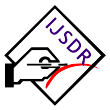Imp Links for Author
Imp Links for Reviewer
Research Area
Subscribe IJSDR
Visitor Counter
Copyright Infringement Claims
Indexing Partner
|
Published Paper Details
|
|
| Paper Title: | Plants Used as Medicine by Tribals |
| Authors Name: | Dr. Ragini Sikarwar |
| Unique Id: | IJSDR2302136 |
| Published In: | Volume 8 Issue 2, February-2023 |
| Abstract: | Worldwide, there are numerous tribal communities that live in small, dispersed groups in plains, forests, hills, and other locations far from the general population. Their economic, cultural, and social patterns vary from region to region. India has the largest tribal population, accounting for 8.6% of the country's total population. Most of India's rural residents, live close to forests and rely on the edible, medicinal, and other parts of plants for their daily sustenance. Prehistoric medicinal plants are still used by Indians. Throughout the entirety of human and environmental evolution, indigenous healing practices have been culturally accepted. About 40% of all health care is delivered through traditional medicine, which is widely used. Plant-based remedies make up about 85% of traditional medicines. Many indigenous communities have used medicinal plants for centuries to treat a wide range of ailments, particularly those that arise on a daily basis. This form of traditional medicine is based on hundreds of years of beliefs and observations. As a result of their close ties to the natural world, these indigenous people are well-versed in the use of plants to treat a variety of illnesses, with nearly 6500 plants used by Southeast Asian traditional healers. The modern pharmaceutical industry has been dominated by the documentation of tribal plants and their traditional uses as medicines. These tribal plants' inherent antimicrobial activity can be enhanced by their respective synthesis of AgNPs. These tribal plants can also serve as a potent source for the development of anticancerous and antibiological drugs with minimal or no adverse effects for the user. More than 50,000 of the 4,22,000 flowering plants that have been identified worldwide are utilized for medicinal purposes. Over 43% of all flowering plants in India are thought to have medicinal value. In ancient literature, it has been documented that medicinal plants were used in India for a long time. However, organized research in this area began in 1956 and is currently gaining recognition and popularity as a result of the decline in plant populations and the loss of traditional knowledge. |
| Keywords: | Green synthesis, Silver nanoparticles, Tribal plants, Antimicrobial. |
| Cite Article: | "Plants Used as Medicine by Tribals", International Journal of Science & Engineering Development Research (www.ijsdr.org), ISSN:2455-2631, Vol.8, Issue 2, page no.763 - 767, February-2023, Available :http://www.ijsdr.org/papers/IJSDR2302136.pdf |
| Downloads: | 000337070 |
| Publication Details: | Published Paper ID: IJSDR2302136 Registration ID:204163 Published In: Volume 8 Issue 2, February-2023 DOI (Digital Object Identifier): Page No: 763 - 767 Publisher: IJSDR | www.ijsdr.org ISSN Number: 2455-2631 |
|
Click Here to Download This Article |
|
| Article Preview | |
|
|
|
Major Indexing from www.ijsdr.org
| Google Scholar | ResearcherID Thomson Reuters | Mendeley : reference manager | Academia.edu |
| arXiv.org : cornell university library | Research Gate | CiteSeerX | DOAJ : Directory of Open Access Journals |
| DRJI | Index Copernicus International | Scribd | DocStoc |
Track Paper
Important Links
Conference Proposal
ISSN
 |
 |
DOI (A digital object identifier)
  Providing A digital object identifier by DOI How to GET DOI and Hard Copy Related |
Open Access License Policy
Social Media
Indexing Partner |
|||
| Copyright © 2024 - All Rights Reserved - IJSDR | |||






Facebook Twitter Instagram LinkedIn